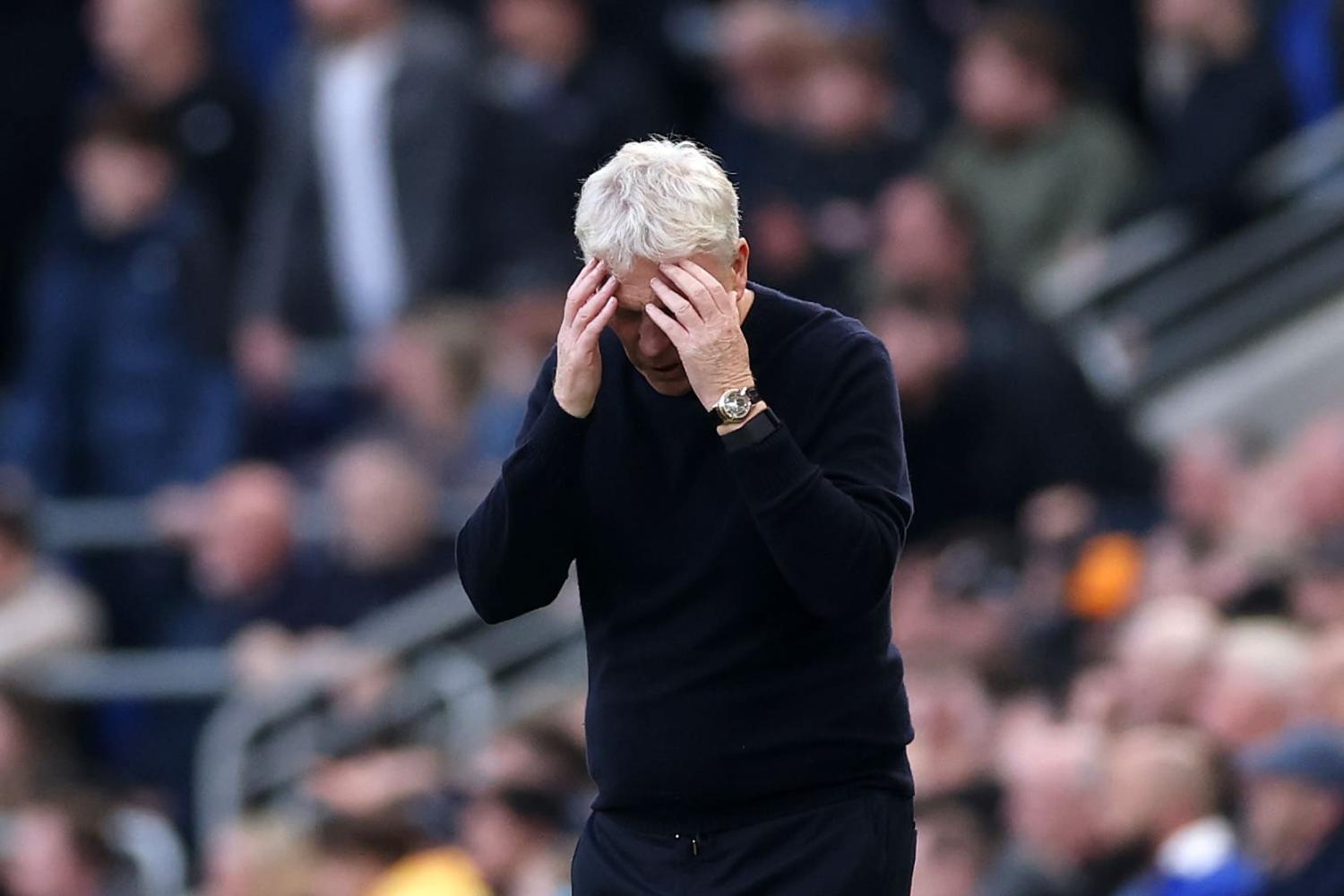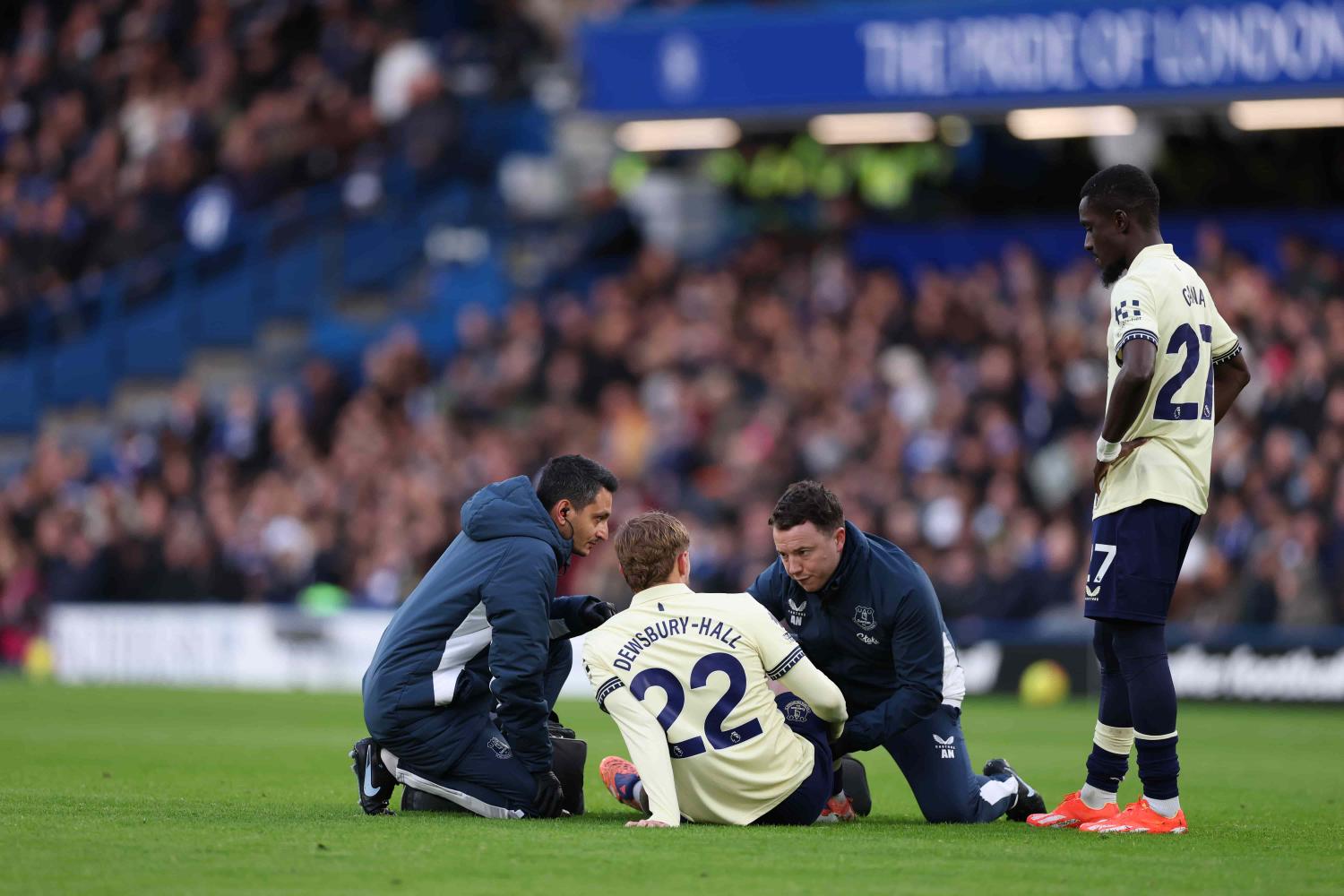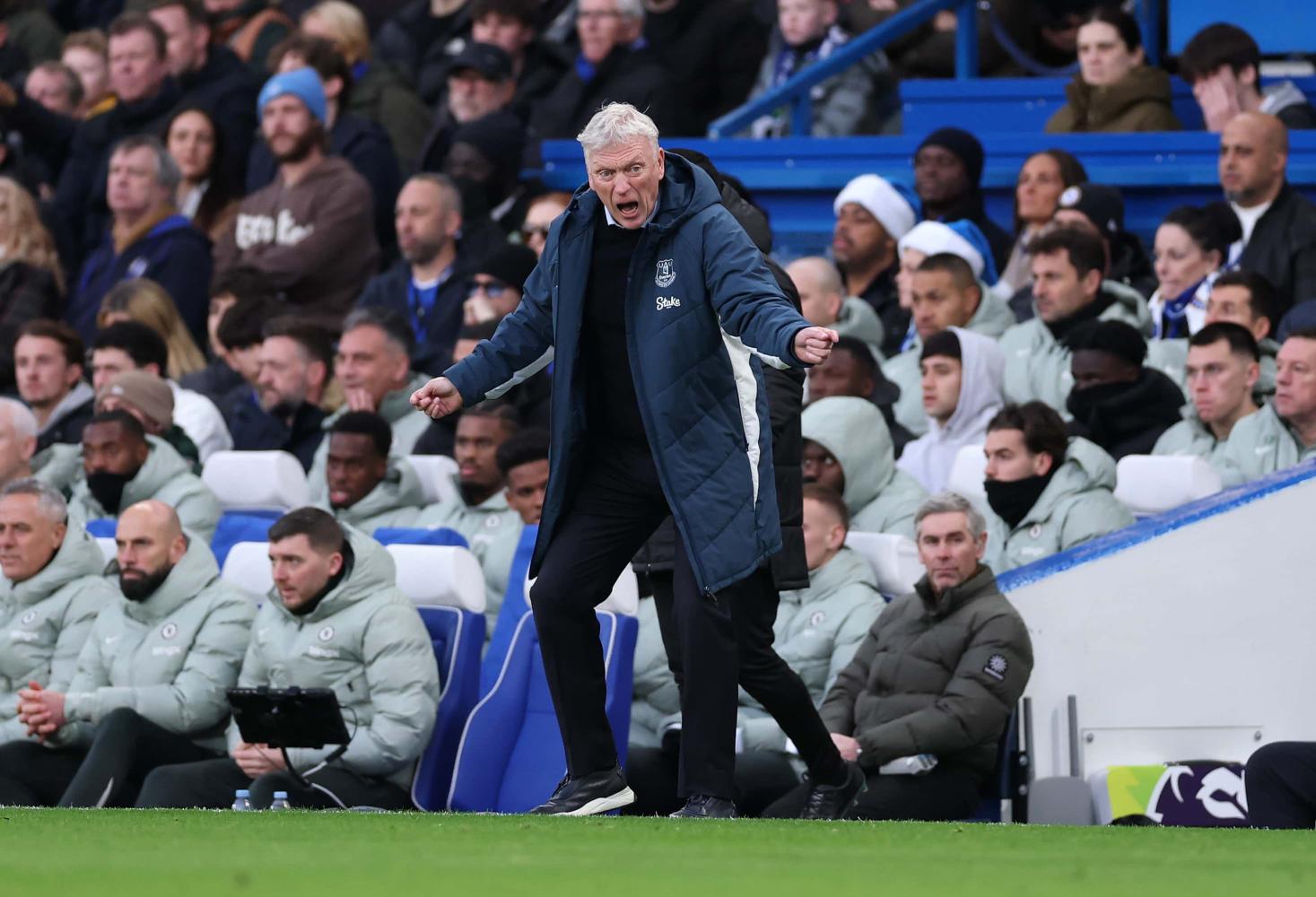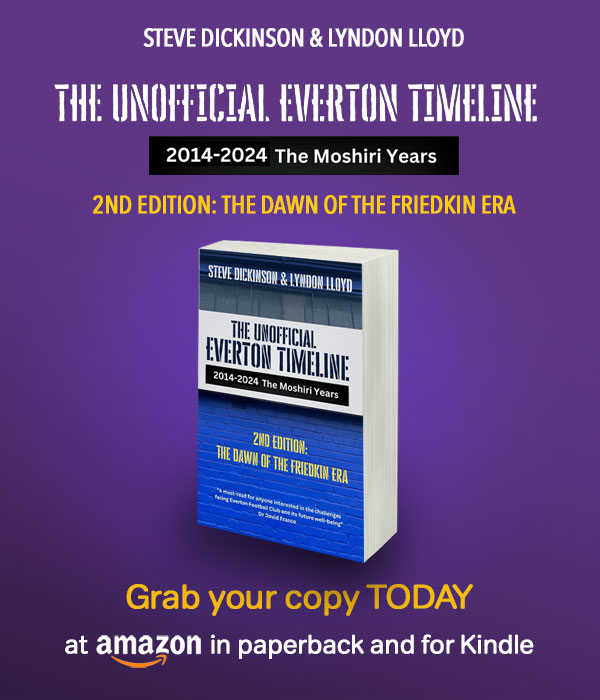Peter Johnson's Relocation Proposal
The former Chairman may have had the right idea when it came to planning for Everton's future... but the devil was in the details of his ill-conceived and poorly executed plans for securing a new stadium.
THE EARLY RUMOURS
Strategically placed rumours that Everton were considering a ground move started to appear in late 1996. In The Evertonian for October of that year, Peter Johnson carefully planted the seeds for his embryonic scheme, making the case that something must be done about Goodison Park... but also perversely and cleverly leaving the subliminal impression that nothing could realistically be done about Goodison Park: the club simply had to move.
Over the next few months, an orchestrated "debate" was held on the pages of The Evertonian, The Liverpool Echo, and The Daily Post. In the process, bits and pieces of Chairman Johnson's "vision" for the future were aired. Finally, in May 1997, Johnson was ready to release the glossy details of his masterpiece: The New Goodison Park.
CHAIRMAN'S CHOICE
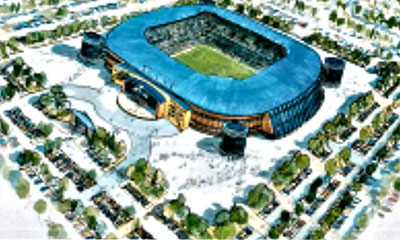
What the Chairman of Everton had decided on looked at first sight very impressive. A 60,000 all-seater bowl-shaped two-tier stadium with – of course – no obstructed views. Surrounded by a huge parking area dotted with trees, this would be the idyllic future home for one of England's greatest clubs.
A purpose-built rail link, 12,000 car-parking spaces, and room for 350 coaches... Famous Everton players would be honoured in full-height statutes... Fans would be encouraged to (pay to?) come and watch training sessions (spelling the end to Bellefield?). A hotel, theme pubs, restaurants, and other leisure amenities would also be included to woo the punters every day of the week, not just on match days.
THE HYPE
Any analysis of the facts will reveal that the decision to move was made
primarily by Peter Johnson. The move was proposed on the simple
basis that Goodison Park was no longer good enough for a club of Everton's
stature. On the surface, the arguments for leaving Goodison Park are
clear and persuasive:
- Obstructed views from around 10% (ie 4,000) of the stadium's seats
- A badly land-locked location, surrounded by narrow terraced streets
- Poor access and very limited parking
- The Gwladys Street and Bullens Road Stands are now antiquated
The case in favour of a move was made in some detail in An Objective View of Goodison Park, by Everton fan, John Burns. Now that Peter Johnson is gone, John Burns is the most vocal proponent of a move; he is totally committed to the relocation of Everton and presents the case in his own inimitable fashion, having no truck with the nay-sayers and Luddites who espouse any alternative view. But in a debate of this nature, it is impossible to be unemotional and to discount nostalgia, whatever he may claim.
In 1997, Everton acquired the School on Bullens Road, but converted it into a Directors Car Park. And there were rumours that the club were slowly buying up all the houses in Goodison Road... These seemed to go contrary to other rumours that Everton had already negotiated the sale of Goodison Park to Tesco for a giant Hypermarket.
GFE – GOODISON FOR EVER-TON
At a grass-roots level, the response to Chairman Johnson's decision to move was mixed. But opponents of the idea soon mobilised into a loose grouping that questioned the wisdom and logic of moving from the grand old ground. Goodison For Evert-ton (GFE) initially struggled to put together a reasoned argument, clutching at straws to hide what was clearly a very emotional reaction to Peter Johnson's "Vision" for the future.
GFE consist of a hardened group of local Evertonians calling themselves the real fans. They labelled the move as a deliberate betrayal of Everton's traditional working-class fanbase. A move out to the suburbs of Liverpool was a transparent attempt to woo a more affluent up-market middle-class, they maintained. At a stroke, the business, pubs and shops around Goodison that had grown to rely on match-day income would be decimated.
GFE also tried to get a dialog going on the many issues raised by the
prospect of moving away from Goodison:
- Where would the new ground be located?
- Who would own the new ground?
- Where will the construction money come from?
- How will the great traditions of Everton be retained and honoured?
- How much will ticket prices have to rise?
No real answers to these questions were forthcoming from the Johnson's regime: in reality, they were unanswerable. But that simple logic did not stop GFE from making a thorough nuisance of themselves by asking these important but embarrassing questions in many quarters. One surprising reaction was from The Liverpool Echo, where the Editor took up his cudgel on behalf of Peter Johnson, and slammed GFE repeatedly.
Johnson predictably had no time for this negative debate, although he did agree to meet with GFE back in 1997. Among the issues raised was the central question about the possible redevelopment of Goodison Park on the current site, and the need to have any vote independently verified.
GFE continued to work for the redevelopment option, and raised money for an independent feasibility study to pursue this option. GFE obtained the services of architects Ward McHugh Associates to prepare an alternative Feasibility Study. The study cost about £6,000, and showed a financially viable concept for redeveloping Goodison Park on the existing site for a budget of around £42M. The main disadvantage of the scheme is the disturbance during the 3- or 4-year construction period.
REDEVELOPMENT
As GFE's support matured, the confusion about redevelopment possibilities at the current site became their main focus. Redevelopment of Goodison Park had been ruled out by Johnson early on, because it was "not feasible". New stands replacing the Gwladys Street and Bullens Road edifices would have much reduced capacities. But it was clear that, if any investigation of redevelopment had been carried out within the Club, it was certainly never going to see the light of day, because it was simply not in Mr Johnson's Grand Plan for the future. Johnson had made it clear that he was just not interested in redevelopment, however "feasible" it may actually be...
At this point, an old Master Builder by the name of Laurence Nolan surfaced with some intriguing sketches that were published in the Liverpool Echo. They showed in conceptual terms how Goodison Park could be redeveloped in stages, moving the pitch toward Stanley Park in the process.
A much more expansive scheme was also put forward by Architecture student, Tom Hughes. Initial sketches of his promising scheme for redeveloping Goodison Parkthat grew into an ambitious final-year design project for Tom at Liverpool University and later formed the basis of a full alternative [PDF] to the Destination Kirkby proposal in 2007. The Club expressed some interest in the project in the late 1990s.
A 1:200 scale model was prepared and exhibited at the University; it clearly showed a 57,000 seated stadium situated at the present site... with St Luke's Church, The Winslow, many of the area's original terraced houses, and Stanley Park all included. Some houses would be affected but the residents of these and all surrounding houses were surveyed for their opinions on such a development. City planners were also consulted, gaining a very favourable response, and the computer-designed stadium was also validated by the Structural Engineering and Architectural Departments of the University.
The design goes a lot further than simply replicating Leitch's criss-cross pattern to weakly satisfy Everton traditions. The design is unique and innovative which is also reflected in the final mark that Tom received for this project. The final design bears little resemblance to those earlier sketches. The model was also accompanied by a 25,000-word report and a research paper.
THE VOTE
Meanwhile, as Johnson had promised, he put the issue to the vote.
On 11 May 1997, more than 30,000 brochures were distributed to fans
attending the Chelsea
match. A pre-paid reply card was to be returned to Goodison Park by
21 May 1997. The vote was a simple one: 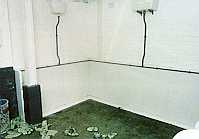
- I want to stay at our existing ground [ ]
- I want to move to our new stadium [ ]
but the brochure included a fairly detailed questionnaire, and tackily offered a prize draw as incentive for completing it. In some quarters, the style and content of the brochure was roundly criticised: its spidery drawings of the new ground were "childish" (actually, they were typical architectural sketches). And the depiction of poor toilet facilities backfired badly as fans asked why they had not been improved while Goodison Park continued to suffer from self-imposed neglect.
The result of the vote was announced by a triumphant Chairman Johnson:
Yes: 18,374 (83.62%) No: 3,600 (16.38%).
The Chairman had his mandate and could proceed with his plans sure in the knowledge that the large majority of fans supported him.
You couldn't argue with that... or could you?
THE BLUE ISSUE
GFE were seething at the result. Astonished by the overwhelming vote in favour, they remained unconvinced of its validity. They maintained that the vote was subject to abuse due in part to the number of unsubmitted forms they had managed to locate.
One outcome of the skepticism was a video-project taken on by Network Five, a small Liverpool company. They decided to present the other side of the story in a special video called The Blue Issue (1998). But the project became steeped in controversy when a Network Five van was raided and lots of film and equipment stolen.
Johnson's henchman, Clifford Finch, refused to participate in the video and instead insisted on the inclusion of a disclaimer which dissociated the Club from the video and all its contents. Yet another public relations disaster had been created by arrogance at the highest levels within the old Johnson regime.
THE BOTTOM LINE
A move to a great new stadium would be brilliant... until you start to look below the sugar-coating to examine the financial aspects. It does not take much effort to realise that the ground move is designed to capitalize on the great name of Everton Football Club and to maximise commercial profits from the newly recognised cash-cow that comprises the huge Everton fanbase.
From a commercial perspective, the desire to move Everton away from its
century-old roots in the environs of Stanley Park centers on the promise
of financial benefits that go way beyond football on the field.
According to the Johnson's plan, the full ground, conference and leisure
possibilities include:
- Opening training facilities to the public
- Ground sharing with other sports (eg Rugby League)
- Conference facilities
- 200-room Hotel
- Multiplex cinema
- Bowling
- Leisure
At the heart of the issue is money, plain and simple. The current revenue generated around Goodison Park on matchdays through the season may be as much as £5M a year. Moving to a new location, away from the pubs and shops that surround Goodison and along County Road would redirect that money, and perhaps much, much more from car-parking and leisure activities – a potential windfall for the financial backers of the new enterprise.
Yes, we would get a fabulous new stadium that might be the envy of every other fan in the country... at least until some other club out-did us. And we could line up in our royal-blue regalia to support our team. But there was a clear possibility that football would not be the central part of this new scheme to increase the personal wealth of Chairman Peter Johnson.
Peter Johnson's stated desire to move Everton to the New Goodison Park remained on track until late 1998. The preferred site was now Gillmoss, just a couple of miles out along the East Lancs Road, and right next to the M57. Discussions were held between the Club and Liverpool City Council but there was thought to be little chance of a rail link.

The bankable Feasibility Study Johnson promised – conducted by or for the key financial institutions who would presumably stomp up the readies to back Johnson's dream-scheme – was due out some time after Christmas 1997... but was never made public.
THE NIGHTMARE ENDS
The resignation of Peter Johnson as Chairman on 1 December 1998 brought about the end of the Hamperdome dream. Sir Philip Carter announced that any plans for a ground move were shelved as the revamped board focussed on sorting out the immediate mess of Everton's finances.

